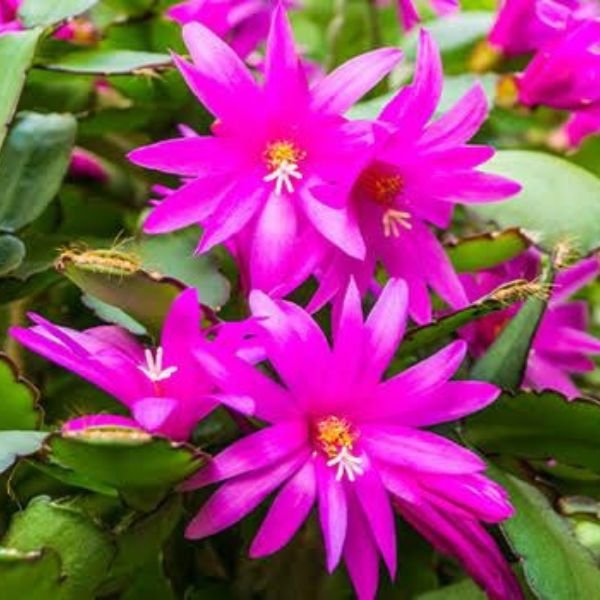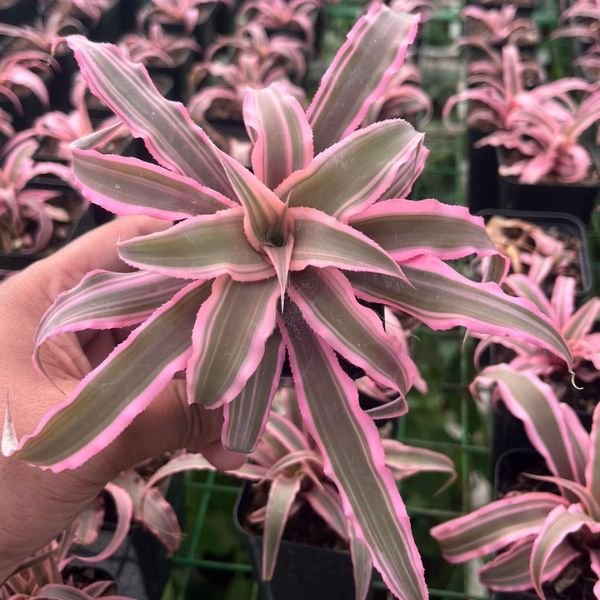Introduction to Mammillaria Plant
Mexican native, Mammillaria Cactus is the best-fitted small succulent houseplant. Mammillaria Cactus earns its name due to the Latin word \”Mammilla\” which means nipple. This flowering cactus is native to Mexico and often comes in clustered or solitary forms. This cactus species comes with different red, yellow, green, or white colored fruits depending on the variety. It has spines attached to a small glucose body that shows funnel-shaped various colored blooms. The Mammillaria plant owns two distinct growth patterns: a compact and solitary form in its short variety and a large and robust form that can display either a solitary or clumping structure.
It features varieties of over 300 species, having different-sized stems that reach up to 8 inches or more in both diameter and height. The most common thing of these cacti varieties is arranged and small cylindrical to flat tubercles, spines, and cushion-like areoles. Soft/sharp spines arise from these areoles. Mammillaria cacti come in various forms with different types of spines. Some have soft or sharp, and some even have yellow, white, and brown spines. For example, Mammillaria Albilanata has a woolly covering with dense spines. Mammillaria Elongata and Ericantha possess yellow spines.
There\’s no wonder that this cactus species of Mammillaria gathered multiple names like Bird\’ Nest cactus, Nipple cactus, Powder Puff cactus, Fishhook cactus, and so on. It gets the special name, \”Pincushion Cactus\” because of its cushion-like areoles. Various colored funnel-shaped flowers and club-shaped fruits look fantastic in their growth stage. You can call them beginner-friendly cacti or succulents because care for Mammillaria is just a breeze.
The Mammillaria plant is an excellent houseplant because of its availability of different sizes from small solitary to large clumps, diverse spines, and vibrant colored flowers. With its compact size, it easily fits on tabletops and windowsills.
Available Mammillaria Plants in the Nursery, PlantZone
Mammillaria is a beautiful flowering cactus species that mostly blooms in summer and spring. Here are a few options for you to explore:
Mammillaria Albilanata: This is a cactus species that has a globose shape and is covered in numerous spines. What makes it unique is its woolly or snow-like appearance and dark pink flowers.
Mammillaria Bocasana: On the other hand it has spines that resemble hooks and white threads along with cream or pink-shaded flowers.
Mammillaria Bombycina: The \”silken pincushion cactus,\” Mammillaria Bombycina is a popular variety for its bright pink flowers. It has a round and cylindrical shape with spines that come in white and brown colors.
Mammillaria Elongata: It is commonly referred to as the ladyfinger cactus. Its elongated oval shape features yellowish and brown colored spines and white to yellow flowers.
Mammillaria Eriacantha: For Mammillaria Eriacantha, it has a green oval shape that produces white-green flowers. This cactus shines with yellow spines that surround its body.
Mammillaria Pringlei: Pink flowering Mammillaria pringlei is known as the lemon ball cactus due to its cluster-forming globose shape and yellow spines.
Mammillaria Prolifera and Prolifera Balck Cactus: are other clustering cactus species, characterized by white to yellow spines. Clustering Mammillaria Black Cactus features black-shaded beauty with white flowers.
Mammillaria Vetula: Mammillaria vetula is a cactus that clusters together and features yellow flowers. It has a green coloration with yellow spines and golden-yellow flowers.
Lighting Requirement
Mammillaria requires a lot of light but you have to understand whether it needs direct or indirect sunlight depending on the species. Too much direct sun exposure can burn the cactus. It\’s best to keep the cacti in the mix of both direct and indirect sunlight. It can tolerate some sort of direct sunlight but not prolonged direct sunlight.
For indoor planting, select the brightest corner to place the Mammillaria. Indoor places like balconies, patios, and southeast or east window sills are the ideal lighting areas for this flowering cactus. At least 4-5 hours of outdoor lighting and other time, the partially shaded area to give indirect light to this plant is required.
Temperature
Like other cacti or succulent species, Mammillaria can tolerate high-heat environments. They do well in the day temperature range from 22°C to 30°C and more. Night temperature between 15°C and 20°C suits the temperature requirement. These plants are also cold-tolerant but the cold draft is a big \’No\’. For Mammillaria, it\’s hard to survive in freezing temperatures or stormy climate situations
High temperatures need frequent watering. Maintaining watering levels according to the temperature is a necessity to have the right moisture level. As a result, a cold climate or dormant period requires less water than a hot climate.
Watering Requirement
Mammillaria needs frequent watering in its growing season. Winter season demands less watering or sometimes no water. Make the top inch of the soil dry before watering again. Whether it\’s summer or spring, too much water at the bottom of the pot can damage the plant.
Fertilization
Fertilization in the growing season is needed for better growth for Mammillaria. A water-soluble/ phosphorus-filled fertilizer gives the support system to boost the health of this succulent. Soil aeration plays an important role in growing this succulent.
Potting, Medium, and Repotting
Use a little larger pot than your Mammillaria size to plant it. Maintaining a good drainage system in the container of this cactus is necessary. The drainage holes are the must things to plant these cacti.
Cactus mix is the recommended soil for cacti. A mixture of sand, fertile and other organic materials can create good soil for this cactus.
At least give 2-3 years for repotting the Mammillarias. Spring or summer works best for repotting them. Select a larger pot/ container than the earlier one to report this cactus. Have a security check with napkins before repotting to hold the cactus.
Pest and Diseases
Mealybugs are the primary pest that attacks the clustered body of Mammillaria. Two solutions are recommended to cure this problem:
- Using homemade pesticide.
- Apply rubbing alcohol on the affected areas.
Fungal and other diseases are created due to overwatering or over-fertilization. Removing fungal areas can be a tricky task but a little bit of patience can do a great task. Carefully detect and cut the damaged areas between the spines and apply fungicide throughout the diseased part of this cactus.







